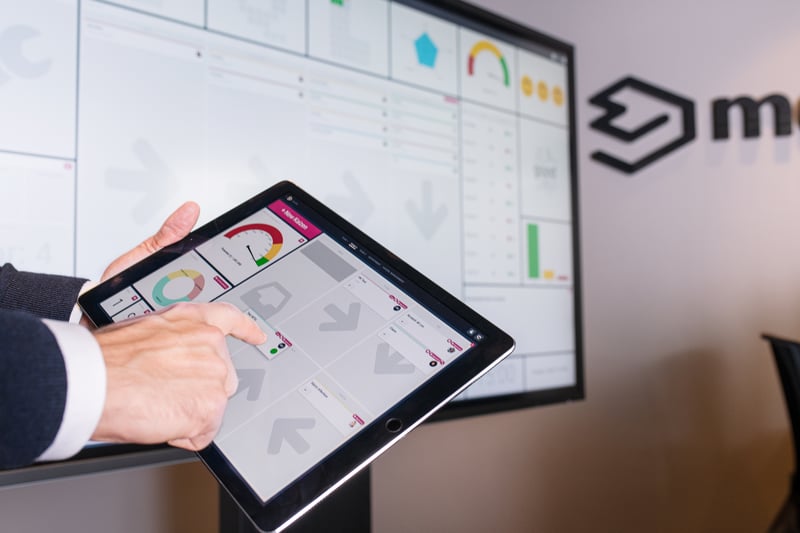Who benefits from digital daily management boards?
Mevisio is an extremely flexible platform where almost anything can be built using the smart modules. The basic idea is that as a leader of a team, project, department, business area, company, or international group, you can get a solution that suits your needs perfectly. As inspiration, we have described some typical use cases. All types of leaders benefit from Mevisio!
The CEO uses a set of management boards that collect data from all the different boards used to lead the entire company. He then gets an aggregated picture of what works well in the business and what needs to be investigated more closely. During weekly management meetings, he can quickly ensure that there is a common understanding in the management team of which departments and processes meet their goals. They can also discuss and re-prioritize the strategies in the business plan, which is of course, of course, visualized on a board the company’s board of directors are also involved.
A Production Director holds a daily meeting with the Production Managers for the various factories in the country. Each Production Manager has had their morning meetings with large touchscreens, which are located on the shop floor in the center of production at each factory. Each has its own board in Mevisio, and at the joint meeting, there is a board that compiles the information from the others in real time. The meeting will then be effective, and they can quickly solve today's problems, thus ensuring that all orders are sent in time.
In Hospital Management, each department manager uses digital visualization boards to manage patient flow between departments. At the same time, it is important to collect ideas and improvements to improve patient safety and lead times from both patients and employees. All patients can submit their ideas from tablets in the waiting room, and the suggestions will immediately appear on the concerned departmental board.
The Sales Manager has an integration with the CRM system that retrieves customer information to their board. In addition to visualizing the sales goals, the board is also used to lead and follow up on all major initiatives, as well as to hand over the projects sold to project managers. The sales representatives handle their initiatives and to-do items on their phone, and all are compiled on the shared board.
The Project Manager responsible for all new development projects uses a couple of different boards to run their projects. The boards are divided into different parts to plan and distribute the tasks to the project members. Once a week, the project manager has to pay extra attention to the board that visualizes and prioritizes risks. It helps the projects achieve their goals of time, cost, and quality.
The Product Owner has a board that classifies and prioritizes all changes to the product. New features are distributed between the developers and various sprints. During the daily Scrum meeting, all team members report their progress and obstacles. Developers overseas attend the meeting through a web link.
The HR Professional responsible for recruitment at the HR department has a board that collects all recruiting needs from the organization. On the recruitment board, everyone can follow their recruitment issues and also switch to a view showing where their potential candidates are in the recruitment process. After the agreement has been written, the case is transferred to the board where new employees are presented.
The Risk Manager in a large group creates a new process for identifying, evaluating, and monitoring risks. It includes quarterly meetings at all levels of the organization. Each department has its own board of risks identified locally and decides which ones should be reported up in the organization. The Risk Manager has a board where they can monitor all risks and see if there are any common risks in different departments.

